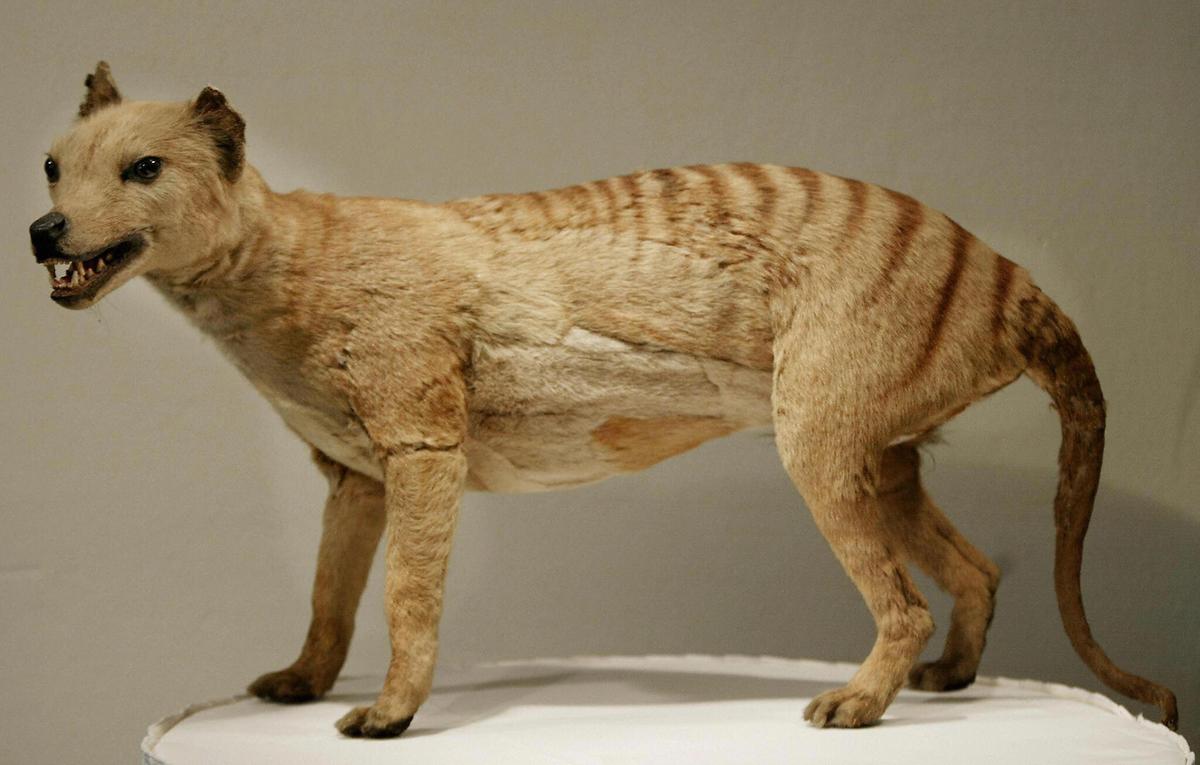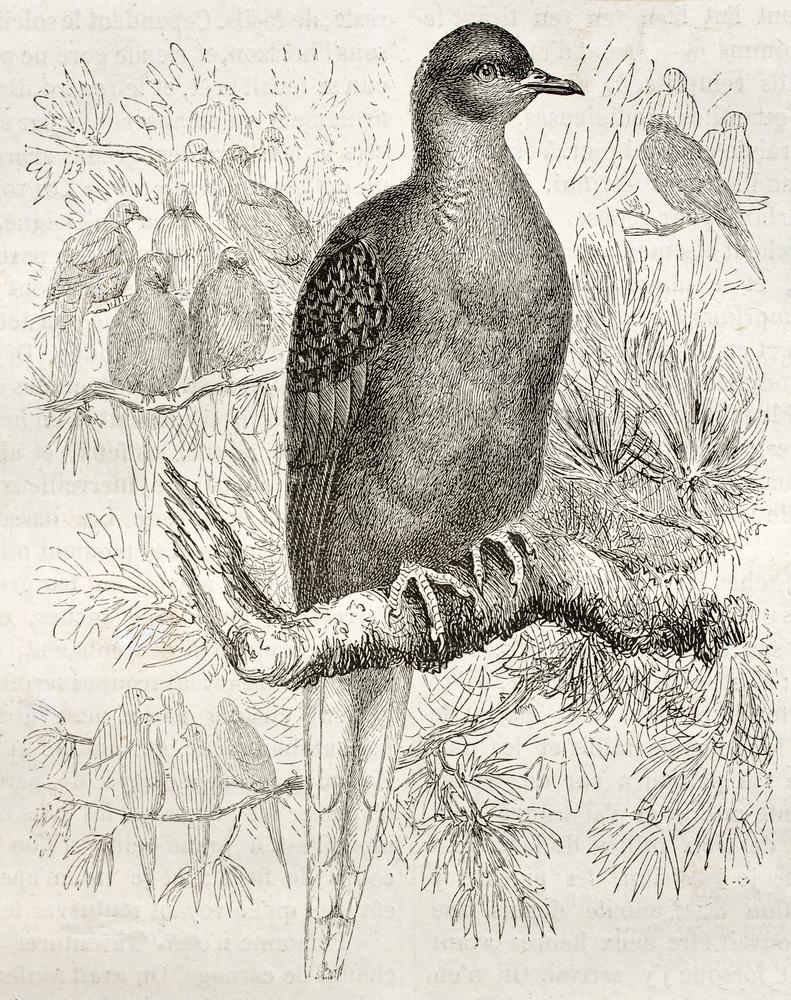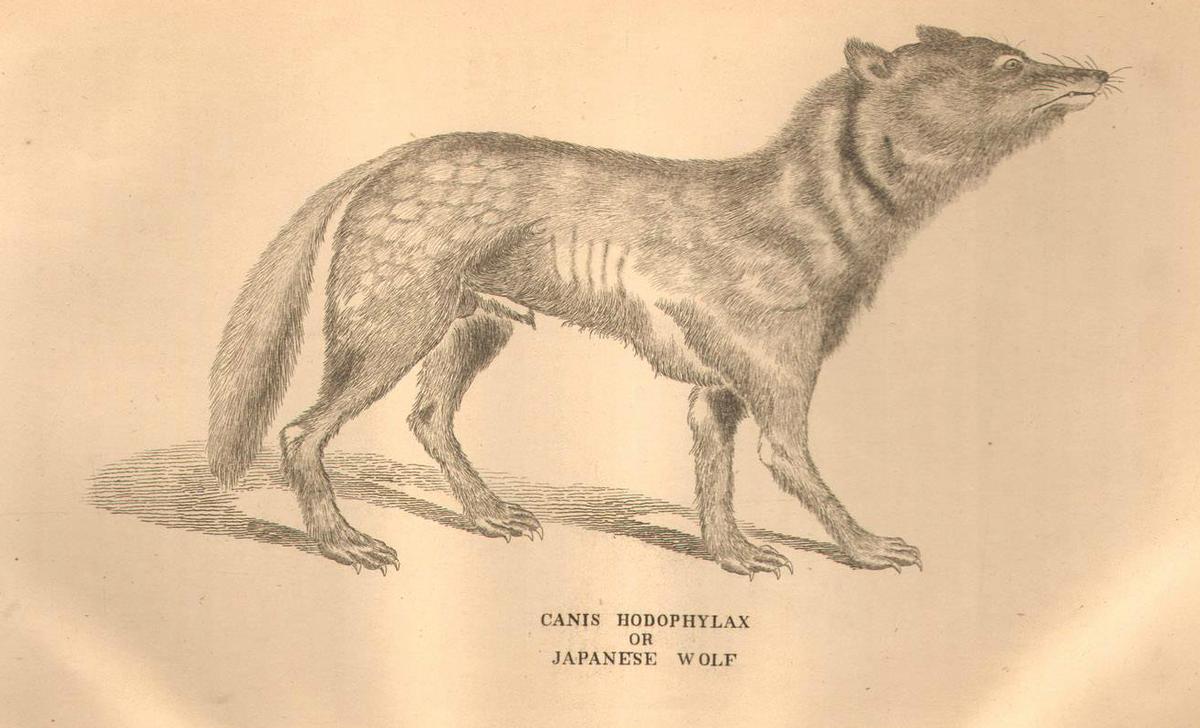1. Thylacine
Reported extinct around 1936.
Thylacine, also known as the Tasmanian Tiger, means “the dog-headed pouched one” in Greek. Thylacines were found throughout the Island of Tasmania in Australia and was the largest flesh eating marsupials of modern times.
Based on fossil records, its immediate family members are known to have existed as early as 23 million to 5 million years ago.
In late 2013, a team of british naturalists from the Centre for Fortean Zoology traveled into the wild terrains of Tasmania where the human population is near non-existent. Even though they haven’t been able to capture any live footage of the animal with their camera traps, the researches are optimistic that some specimens still exists.
The group claims that they’ve interviewed some fairly credible witnesses and gathered sources of what could be the animal’s feces for DNA analysis.
“[One witness] was a government licensed shooter who controls wallaby numbers. He saw the animal twice, he also knew a forestry worker who saw one. All these were in the north-east. The owner of a team rooms and garden saw one in central Tasmania. Many more sightings uncovered by Tony Healy [one of the expedition members] ranging from 1982 to 2012,” reads a post on Fortean Zoology by one of the expedition team members.

(Torsten Blackwood/AFP/Getty Images)
2. Passenger Pigeon
Reported extinct in 1914.
Traveling in flocks up to a mile wide and 300 miles long, the passenger pigeon was once the most numerous bird on the planet during the 19th century until its extinction in the early 20th century due to hunting and loss of habitat.
According to the Encyclopedia of Smithsonian Institution, passenger pigeon may have constituted 25 to 40 percent of the total bird population of the United States and could have had a population of 3 billion to 5 billion at the time Europeans arrived in America.
Passenger pigeons are one species of extinct animals that could be resurrected by cloning. According to senior business editor Antonio Regalado of MIT Technology Review, the Long Now Foundation is financially supporting an effort known as Revive and Restore, to bring the passenger pigeons back to life.
Regalado quoted Hendrik Poinar, a researcher at McMaster University of Canada that “not only is sequencing of extinct genomes a reality, but revival of extinct species is within reach.”
It’s also possible some passenger pigeons may still roam, according to reports by some bird watchers. However, none have been confirmed and the scientific consensus is that they are extinct—though they may be the best candidates for being brought back.

(Passenger Pigeon image via Shutterstock)
3. Woolly Mammoth
Reported extinct around 2,000 B.C.
Standing at 11 feet tall and weighing up to 6.6 tons, the Woolly Mammoth lived alongside early humans around 200,000 years ago in Eurasia and North America.
Due to a combination of hunting and climate change, the last known mainland Mammoths died in Siberia nearly 10,000 years ago.
However, isolated populations survived on Wrangel Island in the Arctic Ocean until 4,000 years ago, raising the possibility that some may still survive in remote wilds of Siberia yet to be explored by humans.
Recovered Mammoth carcasses raise the ethical question of whether we should clone the animal back to life. According to an article on TheConversation.com by Ian Wilmut, an Emeritus Professor of the University of Edinburgh known for the first clone of a mammal, conventional cloning technique may not be feasible due to the degraded state of the carcass’ genetic remains.
4. Honshu Wolf
Reported extinct around 1905.
The Japanese wolf, once occupied the islands of Honshu, Shikoku and Kyushu in Japan, was the world’s smallest known wolf, measuring 35 inches in length and 12 inches in height.
Its population began to decrease in 1732 when rabies was first reported in Kyushu and Shikoku. The virus might have been transferred by domestic dogs and according to a post on scilogs.com by zoologist and biologist Anne-Marie Hodge. Hodge writes it’s possible this was deliberately introduced by humans to create an excuse to eliminate the wolf population from the area.
Though declared extinct in 1905, a photograph shows a specimen surviving until 1910.
According to a post on cryptomundo.com by Brent Swancer, an American cryptozoologist, in the early 2000s, Japanese zoologist and wolf expert Yoshinori Imaizumi and his colleague Mizuko Yoshiyuki, did a thorough and detailed analysis of the photograph and concluded the specimen was indeed a Honshu wolf.
Swancer also raises the possibility that the Japanese wolf may still exist—given the number of cases of sightings, photos, and reports of carcasses from time to time.

Honshu wolf - an illustration in Chrysanthemum magazine, Jan. - Dec. 1881, Volume I.
5. Mokele-mbembe
Extinct roughly 65 million years ago.
Mokele-mbembe meaning “one who stops the flow of rivers,” is a large, long-necked, long-tailed reptile. The legendary creature is said to live deep in the Congo River basin of Central Africa and is thought by some cryptozoologists to be a Sauropod dinosaur.
Even though reports have been circulating for the past two centuries, skeptics point out that no photograph or physical evidence has yet to be found.
William Gibbons, an explorer with a Ph.D. in Cultural Anthropology at Warnborough College, Oxford, has conducted expeditions deep into the Congo. Gibbons met Pastor Eugene P. Thomas who recounted that the pygmies, a local tribe situated near Lake Tele ended up killing one of the Mokele-Mbembes in 1959.
The story was that the tribe fished daily in the lake channels where the Mokele-Mbembes used to roam around in search of vegetation. The pygmies decided to erect a barrier across the river so their fishing activities wouldn’t be disrupted. However, seeing that the creatures were attempting to break through the barrier, the pygmies speared one of them to death and later cut it into pieces which took several days.
According to Gibbon’s blog on anomalist.com, the tribe described the creature to Thomas as “being bigger than a forest elephant with a long neck, a small lizard-like head, which was decorated with a comb-like frill. It had a long, flexible tail, a smooth, reddish-brown skin and four stubby, but powerful legs with clawed toes.”





